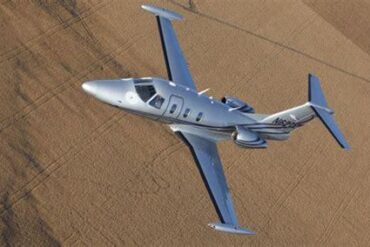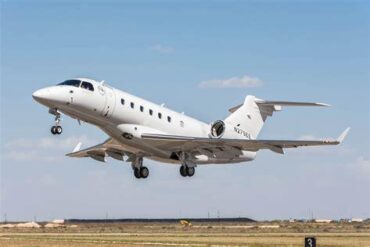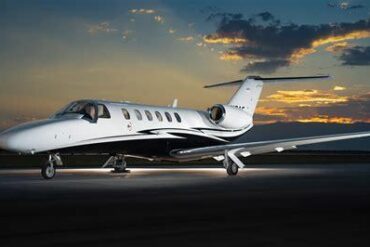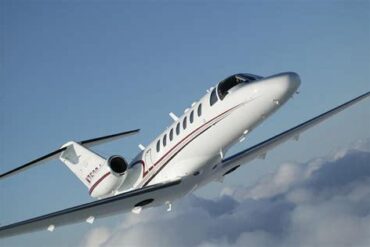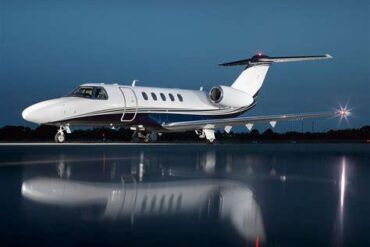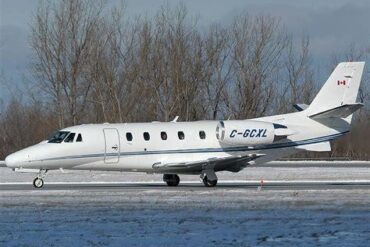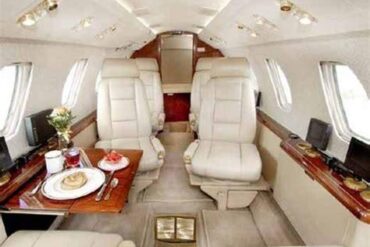The Cessna Citation 500, a cornerstone in the world of light jets, has gained prominence for its exceptional performance, reliability, and operational efficiency. As potential buyers and operators evaluate their options in the private aviation market, understanding the price and operating costs associated with the Citation 500 is crucial. In this comprehensive analysis, we delve into various aspects that influence the cost of ownership and operation of this remarkable aircraft.
Overview of the Cessna Citation 500
The Cessna Citation 500 series, introduced in the early 1970s, has become synonymous with business aviation. Its sleek design and advanced technology have made it a preferred choice for corporate travel and personal use alike. With a capacity to comfortably seat 5 to 7 passengers, the Citation 500 combines speed and comfort, making it ideal for short to medium-haul flights. Equipped with twin engines, this jet can reach speeds of up to 400 knots and has a range of approximately 1,500 nautical miles, allowing it to connect major city pairs with ease.
Purchase Price of the Cessna Citation 500
When considering the purchase price of a Cessna Citation 500, several factors come into play. The average market price for a used Citation 500 typically ranges between $1.5 million and $3 million, depending on the aircraft’s age, condition, and installed avionics. Newer models with upgraded features can command higher prices, while older models may be available at a lower cost.
Factors Influencing Purchase Price
-
Aircraft Condition: The overall condition of the aircraft significantly affects its market value. A well-maintained Citation 500 with a comprehensive maintenance history will generally fetch a higher price.
-
Avionics and Upgrades: Modern avionics packages and enhancements can increase the value of the Citation 500. Buyers often seek aircraft equipped with advanced navigation systems, autopilot capabilities, and updated safety features.
-
Flight Hours: The total flight hours logged on the airframe and engines can impact the purchase price. Aircraft with lower flight hours may be priced higher due to their perceived longevity and reduced wear.
-
Market Demand: Fluctuations in market demand for light jets can influence pricing. Economic conditions, trends in business travel, and the availability of financing options all contribute to market dynamics.
Operating Costs of the Cessna Citation 500
Understanding the operating costs of the Cessna Citation 500 is essential for prospective owners and operators. These costs encompass a range of expenses, including fuel, maintenance, insurance, pilot salaries, and hangar fees. Below, we provide a detailed breakdown of the key components of operating costs.
Fuel Costs
Fuel is one of the most significant recurring expenses for any aircraft operator. The Cessna Citation 500 typically consumes around 150 to 200 gallons of fuel per hour. With an average fuel price of $5 to $7 per gallon, operators can expect to spend approximately $750 to $1,400 per flight hour on fuel alone.
Maintenance Costs
Routine maintenance is critical to ensuring the safety and reliability of the Citation 500. Maintenance costs can vary widely based on usage, but operators should budget around $150 to $300 per flight hour for regular inspections, repairs, and parts replacement. This includes costs associated with:
-
Scheduled Maintenance: Regular inspections required by aviation authorities, which typically occur every 100 hours or annually.
-
Unscheduled Repairs: Unexpected maintenance issues that may arise, impacting overall operational costs.
Insurance Costs
Insuring a Citation 500 is a necessary expense for any owner. Insurance premiums can vary based on factors such as the aircraft’s value, the owner’s flying experience, and coverage limits. On average, operators can expect to pay between $15,000 and $30,000 annually for insurance coverage. It’s advisable to consult with specialized aviation insurance providers to determine appropriate coverage.
Pilot Salaries
For those who choose to hire professional pilots, salaries represent a significant portion of operating costs. Depending on experience and qualifications, salaries for Citation 500 pilots can range from $75,000 to $150,000 per year. Additionally, benefits, training, and other employment-related expenses should also be factored into the overall cost. Owners opting for fractional ownership or charter services may find these costs included in their service agreements.
Hangar and Storage Fees
Storing the Citation 500 requires proper facilities, typically in the form of a hangar. Hangar fees can vary based on location and the size of the facility but generally range from $1,000 to $3,000 per month. It’s essential to consider these costs when calculating the overall budget for aircraft ownership.
Miscellaneous Operating Expenses
In addition to the primary operating costs mentioned above, several miscellaneous expenses should be taken into account:
-
Landing and Ramp Fees: Airports may charge fees for landing, parking, and other services. These costs can vary significantly based on airport location and traffic.
-
Crew Training: Ongoing training for pilots and crew members is vital for safety and compliance, contributing to overall operational costs.
-
Navigation and Communication Services: Subscription fees for services such as weather updates and flight planning tools may also apply.
Total Operating Cost Estimates
Considering all of the aforementioned factors, the total operating cost for a Cessna Citation 500 can range from $1,500 to $2,500 per flight hour. This estimate encapsulates fuel, maintenance, insurance, pilot salaries, hangar fees, and additional miscellaneous costs.
Cost Comparison with Other Jets
When evaluating the Cessna Citation 500, it’s beneficial to compare its costs to similar aircraft in the light jet category. For instance, the Learjet 31 and Embraer Phenom 100 are popular alternatives. Here’s a brief comparison of their operating costs:
-
Learjet 31: Operating costs range from $1,600 to $2,800 per flight hour, with slightly higher fuel consumption rates.
-
Embraer Phenom 100: Typically, operating costs are around $1,200 to $2,000 per flight hour, making it a more economical choice, albeit with a smaller cabin size.
The Cessna Citation 500 stands out with its balance of performance, comfort, and cost-effectiveness, appealing to both corporate and private operators.
Conclusion
In conclusion, the Cessna Citation 500 remains a highly sought-after aircraft in the private aviation sector. While the purchase price can vary significantly based on multiple factors, understanding the operating costs is equally important for prospective owners. With fuel, maintenance, insurance, pilot salaries, and storage fees all contributing to the overall expenditure, a comprehensive understanding of these costs ensures informed decision-making.
Investing in a Cessna Citation 500 not only provides unparalleled convenience and flexibility in travel but also represents a commitment to quality and excellence in aviation. Whether for business or leisure, this aircraft continues to deliver a superior flying experience, making it a worthy consideration for those in the market for a light jet.




